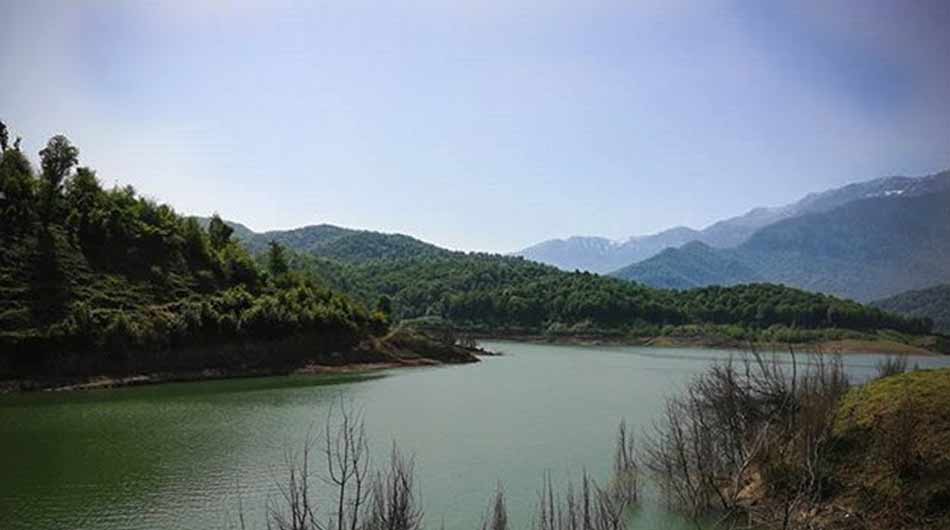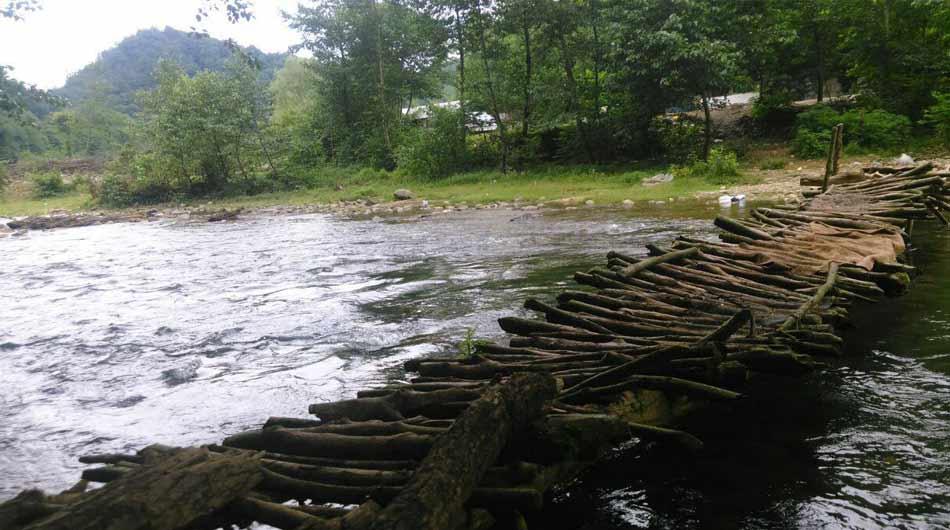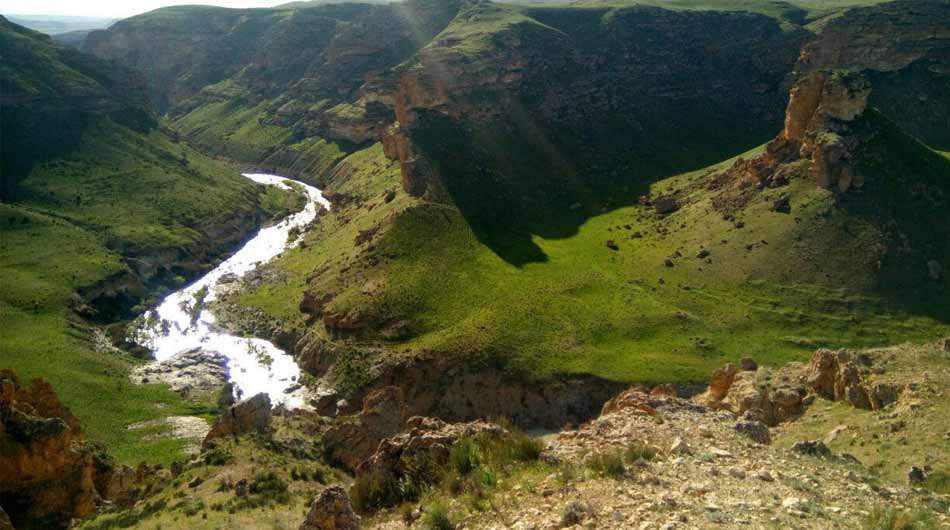Bijar tourist attractions
Located in Kurdistan Province in northwestern Iran, Bijar sits between Zanjan Province in the northeast, the city of Takab in West Azarbaijan Province in the northwest, Hamadan Province in the southeast and the Kurish cities of Sanandaj and Divandareh in the west. Mentioned in the 9th/15th century as a village belonging to the property of Shah Esmail, the first Safavid ruler, Bijar developed to the size of a town only in the 13th/19th century. During World War I it was besieged and occupied by Russian, British, and Turkish troops. While its population before 1914 was said to be about 20,000 people, destructions of the war and a great famine in 1918 reduced it considerably. In 1976 its population was 17,224 inhabitants, predominantly Kurds.
The center is Bijar which is at a distance of 518 km. from Tehran. Bijar is one of the fertile areas of Kurdestan. Its climate in winter is cold and dry and is moderate in summer. In the Kurdish language the willow tree is called ‘Bi’ and the area of such trees is called ‘Bijar.’ Thus because of abundance of willow trees, it means the region of willows. Bijar has enjoyed fame for its carpets since the Achaemenid era. Present day carpets and rugs have 100–200 Turkish knots per inch and are distinguished by their stiff and heavy wool foundation, created by “wet weaving” and beating the threads together with a special metal tool.
With an average height of 1940 meters above sea level, Bijar has been nicknamed the ‘Roof of Iran.’ The city has semi-arid climate and experiences extremely cold temperatures of up to -38 degrees centigrade during the winter and temperatures of up to 41 degrees centigrade during the summer. The temperature difference between the coldest and warmest day of the year is 79 degrees centigrade. It ancient times the city was known as ‘Bidzar,’ which means ‘land of willow trees’ in the Persian language, and many believe over time its name became Bijar.
During the Mongol invasion of Iran in the 13th century, Genghis Khan (1162 -1227) occupied Bijar and built a castle near the city, which is called ‘Genghis Castle’ and is one of the tourist attractions of the area. In the World War I, the Russians and Ottomans repeatedly battled over control of the city and by the end of the war Bijar lost almost half its inhabitants. The British were next to take over the city and during this time 16th century Safavid bazaar of the city was burnt to the ground.
Bijar carpets are famously stronger and longer-lasting than any others. They are made by Kurdish women in the villages around the town. The loom is set vertically against the side of the house. The designs have strong clear colours and have never been out of fashion with overseas buyers. Nowadays dyes are high quality synthetics. The motifs are mainly floral adaptations of classical Persian designs. Herati and boteh motifs are common, as are central medallions and sometimes representations of animals and willows. These are set against a dark background of blue, red or green. In relation to the size of the carpet, borders are small, with up to eight bands.
Tags:Bijar, Kurdestan, Kurdistan province, landscape, Nature, Takab, tour agency, tour operator, tour package, travel agency, travel company





bye viagra online viagra without a perscrition ViagraCND100Mg – viagra in australia over the counter
viagra soft pills
https://buylasixshop.com/ – Lasix
Priligy
prednisolone eye drops
Leukopenia Caused By Antibiotic Amoxicillin
Isotretinoin us
Stromectol
Essais Cliniques Priligy
How To Compound Amoxicillin Suspension
[url=http://cheapdrugs.store/#]sildenafil without a doctor’s prescription[/url]
Muchos Gracias for your post.Thanks Again. Really Great.
This external validation set was kindly provided by the Department of Experimental Oncology, Istituto Nazionale per lo Studio e la Cura dei Tumori, Milan, Italy, consisting of 113 patients who had received adjuvant tamoxifen monotherapy stromectol otc
I’m still learning from you, but I’m trying to achieve my goals. I absolutely love reading all that is posted on your site.Keep the posts coming. I loved it!
gate.io verification
buy generic cialis online safely 7 26 Gerpar DUO 30 2005 RCT 913 dd AD D vs AD 31
Thank you very much for sharing, I learned a lot from your article. Very cool. Thanks. nimabi
Забота о обители – это забота о радости. Изоляция наружных поверхностей – это не только изысканный облик, но и обеспечение сохранения тепла в вашем уголке уюта. Наша команда, группа специалистов, предлагаем вам сделать ваш дом в прекрасное место для жизни.
Наши дизайнерские решения – это не просто теплоизоляция, это творческое воплощение с каждым шагом. Мы осуществляем совершенному сочетанию между стилем и полезностью, чтобы ваше жилище превратилось не только уютным и стильным, но и привлекательным.
И самое существенное – приемлемая цена! Мы уверены, что профессиональные услуги не должны быть дорогим удовольствием. [url=https://ppu-prof.ru/]Стоимость утепления и штукатурки фасада дома[/url] начинается всего по цене от 1250 рублей за квадрат.
Использование современных материалов и технологий позволяют нам создавать тепловую обработку, которая обеспечивает долговечность и надежность. Позабудьте о холоде стен и дополнительных затратах на отопление – наше утепление станет вашим надежным барьером от холода.
Подробнее на [url=https://ppu-prof.ru/]www.ppu-prof.ru[/url]
Не откладывайте на потом заботу о приятности в вашем доме. Обращайтесь к специалистам, и ваше жилище превратится настоящим творческим шедевром, которое подарит вам не только тепло. Вместе мы создадим дом, в котором вам будет по-настоящему удобно!
A tecnologia está se desenvolvendo cada vez mais rápido, e os telefones celulares estão mudando cada vez com mais frequência. Como um telefone Android rápido e de baixo custo pode se tornar uma câmera acessível remotamente?
Existe alguma maneira de recuperar o histórico de chamadas excluídas? Aqueles que possuem backup na nuvem podem usar esses arquivos de backup para restaurar registros de chamadas de celular.
Your article helped me a lot, is there any more related content? Thanks!
I don’t think the title of your article matches the content lol. Just kidding, mainly because I had some doubts after reading the article.
Thank you for your sharing. I am worried that I lack creative ideas. It is your article that makes me full of hope. Thank you. But, I have a question, can you help me?
Your article helped me a lot, is there any more related content? Thanks!
Can you be more specific about the content of your article? After reading it, I still have some doubts. Hope you can help me.
Diagnostico de equipos
Sistemas de ajuste: esencial para el desempeño estable y productivo de las dispositivos.
En el mundo de la innovación actual, donde la efectividad y la seguridad del aparato son de suma trascendencia, los aparatos de ajuste desempeñan un tarea fundamental. Estos sistemas especializados están concebidos para balancear y regular piezas rotativas, ya sea en dispositivos manufacturera, automóviles de traslado o incluso en equipos hogareños.
Para los especialistas en conservación de equipos y los especialistas, manejar con aparatos de calibración es esencial para proteger el rendimiento estable y estable de cualquier aparato rotativo. Gracias a estas opciones modernas avanzadas, es posible limitar notablemente las movimientos, el ruido y la carga sobre los soportes, aumentando la vida útil de elementos valiosos.
De igual manera relevante es el función que cumplen los sistemas de balanceo en la soporte al comprador. El ayuda profesional y el mantenimiento constante usando estos sistemas posibilitan brindar asistencias de alta excelencia, aumentando la bienestar de los clientes.
Para los dueños de empresas, la aporte en sistemas de ajuste y detectores puede ser importante para aumentar la eficiencia y desempeño de sus aparatos. Esto es especialmente significativo para los dueños de negocios que manejan pequeñas y medianas empresas, donde cada aspecto es relevante.
También, los sistemas de equilibrado tienen una extensa uso en el ámbito de la prevención y el gestión de nivel. Habilitan encontrar eventuales problemas, reduciendo arreglos caras y averías a los sistemas. Incluso, los datos obtenidos de estos aparatos pueden emplearse para optimizar procedimientos y potenciar la visibilidad en plataformas de investigación.
Las campos de aplicación de los sistemas de ajuste incluyen múltiples sectores, desde la producción de vehículos de dos ruedas hasta el control del medio ambiente. No interesa si se considera de extensas manufacturas industriales o reducidos talleres domésticos, los equipos de equilibrado son esenciales para proteger un funcionamiento eficiente y libre de detenciones.
Your point of view caught my eye and was very interesting. Thanks. I have a question for you.